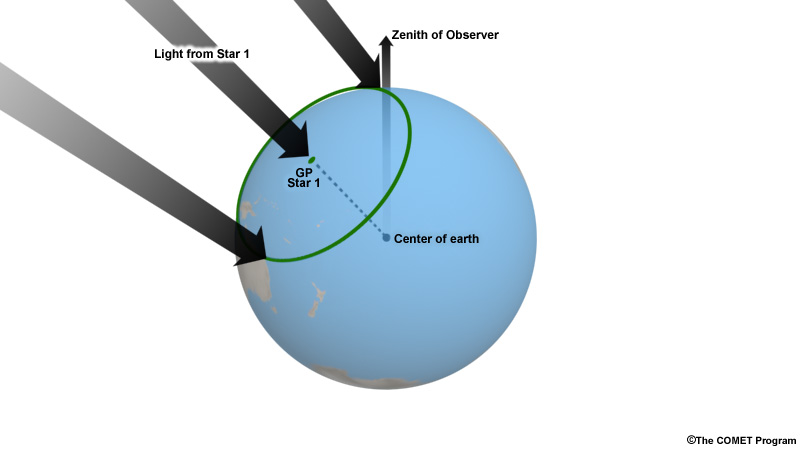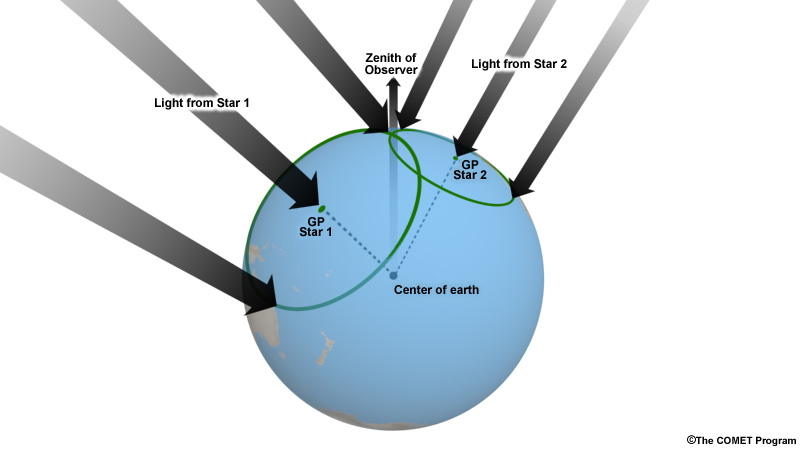Basics » Circles of Position
We have learned that if we measure a star's zenith distance—that is, how many degrees it is away from being directly above us—then we know how far away we are from its geographic position.

For example, let's say we measure a star's zenith distance as exactly 43 degrees. Because each degree is 60 nautical miles, we are 2580 miles from its geographic position. But, we don't really know exactly which direction the geographic position is. In other words, we are somewhere on a circle with a radius of 2580 miles centered at the geographic position. This is called a circle of position, because we are located somewhere on the circle.

So how do we find out where on the circle we are? Simple: measure more than one star! Each star will have a different sized circle, centered on a different geographic position. For example, let's say we measure the zenith distance of star number two, and it is 21 degrees. We then know that we are 1260 miles from star number two's geographic position (1260 = 21 x 60). So our second circle of position has a radius of 1260 miles centered at star number two's geographic position.

Our position must be at the intersection of all of the circles.